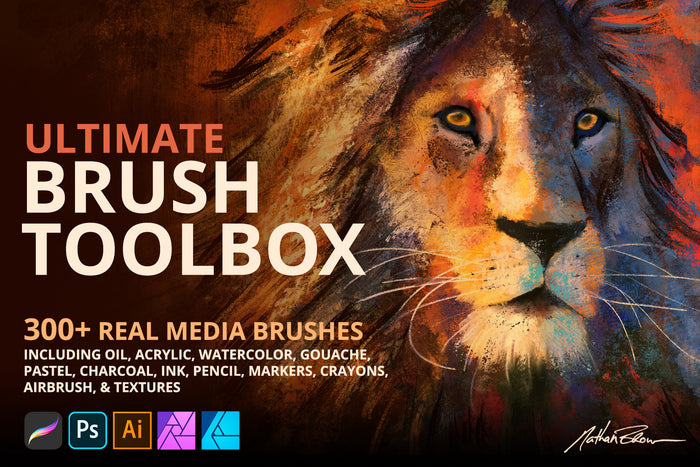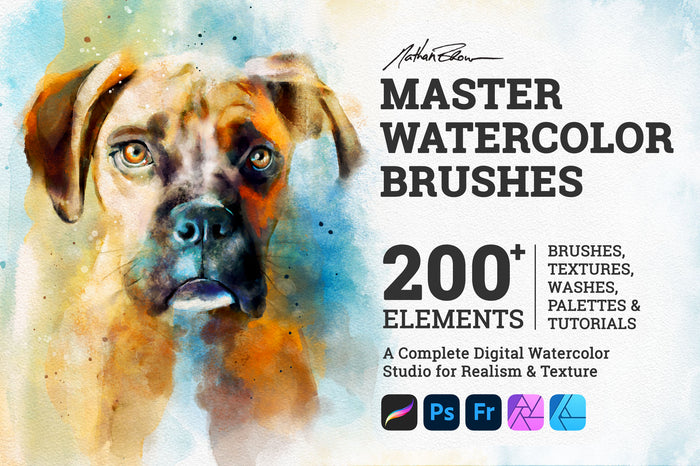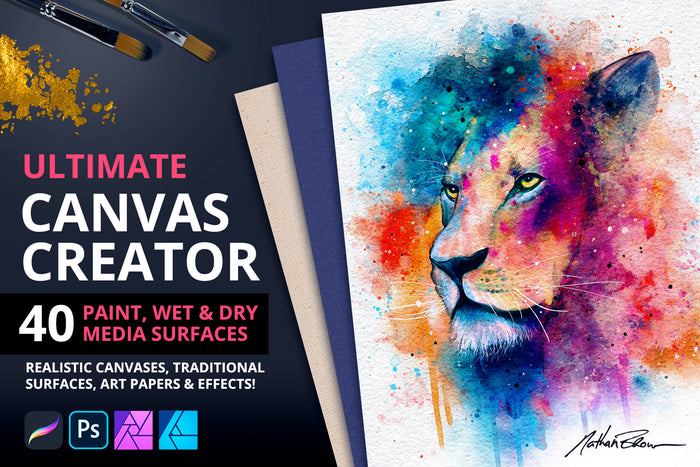Several products here at Trailhead Design Co. feature textures in both vector and bitmap format. I get lots of questions on how to best use these textures in Adobe Illustrator. In this tutorial I’ll show you three really effective methods for applying textures to your vector designs.
METHOD 1: TEXTURE LAYER
For this example I’ll be using some textures from the Vector Screen Texture Pack. When you open up one of the files from the texture pack in Illustrator, you’ll see a collection of vector textures like this.
Note: I’ll be covering methods to create your own vector textures in future articles, but for this example let’s assume you already have some on hand.

Select a texture and copy it (Cmd+C) to the clipboard. Now switch over to your design file. I’m using a logo badge design from the Minimal Vintage Badges set. Create a new layer, from the layers panel (Window | Layers), and paste (Cmd+V) the texture there. Make sure this new layer is above your artwork layer.

With the texture selected, use the Eyedropper tool to select the background color of the image. This effectively hides the texture except for where it appears above the artwork. Depending on your texture, you may need to copy and paste it several times and move it around randomly to completely cover the design.

METHOD 2: TEXTURE CLIPPING MASK
Another method for applying vector textures is through a Clipping Mask. First up, draw a large white square over the object that you plan to mask. In this example it would be my label design. Now select the white square and the label design.

Now open the Transparency panel (Window | Transparency). Click the button labeled “Make Mask”. Select the white square to make sure you are applying artwork on the mask itself. Paste your texture vectors here. Make sure they are black, as black will mask or hide portions of the label.

This method is allows you to change the background color of your artwork without having to worry about changing the color of your foreground textures as you would have to do in method 1.
Note: Open the Layers panel within the mask and notice that the mask layer can be ungrouped and portions can be locked/unlocked. This is great for keeping track of multiple texture elements within a mask.
METHOD 3: BITMAP TEXTURES
Another, often overlooked, method is to apply textures using bitmap tiffs. This is a very powerful way of working with textures, within Illustrator, as the file size is greatly reduced. You’ll notice that vector textures can inflate a file size quickly, due to all of the paths and points. You won’t have to worry about that with bitmaps.
For this example I’ll be using a bitmap tiff from the Halftone Lines set from the Just Good Textures series.

Place the bitmap file on a new layer above your artwork. With the bitmap selected use the Eyedropper Tool (I) to select a color that matches the background. That’s it! You heard right… you can change the black within a bitmap file to any color you choose within Illustrator.

Due to the reduced file size and ease of editing, this option makes working with bitmaps ideal for sending to a printer.
I hope these methods for using textures within Illustrator help you to create some amazing work. Feel free to contact me, if you have any additional thoughts or need assistance. I’m always around and willing to help.








